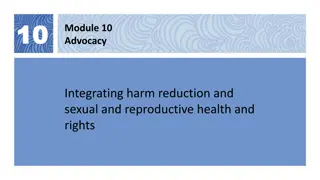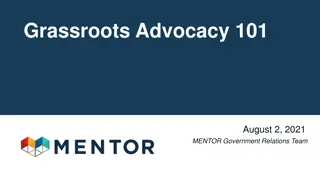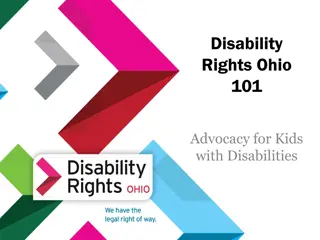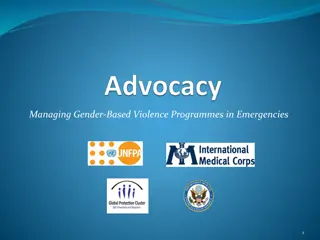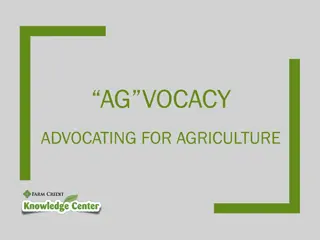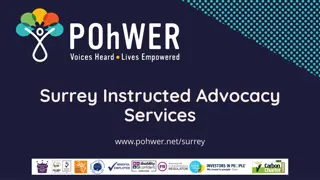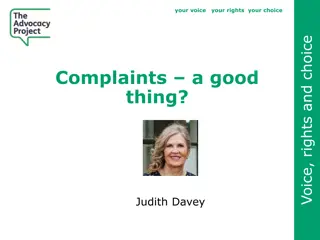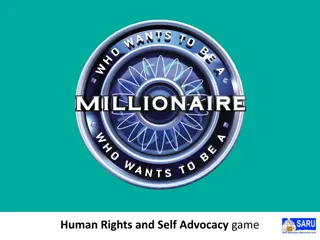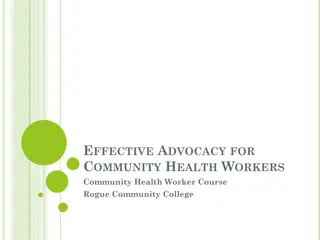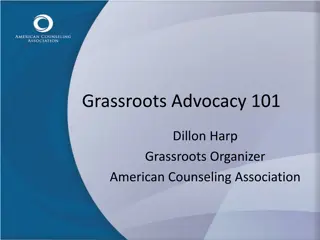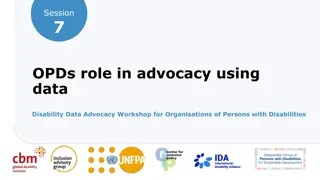Empowering Yourself through Self-Advocacy: Speaking Up and Making Decisions
Learn about self-advocacy from Paul Mansell, an expert in the field. Discover the importance of confidently voicing your wants, needs, and concerns in various settings. Understand how self-advocacy involves speaking up, making decisions, and taking pride in yourself. Gain insights into advocating for your rights and being informed to make a positive impact in your life.
Download Presentation

Please find below an Image/Link to download the presentation.
The content on the website is provided AS IS for your information and personal use only. It may not be sold, licensed, or shared on other websites without obtaining consent from the author. Download presentation by click this link. If you encounter any issues during the download, it is possible that the publisher has removed the file from their server.
E N D
Presentation Transcript
Self-Advocacy and You Speaking up, making a difference, taking pride in yourself, and preparing for your IPP meeting By Paul Mansell
Introduction My name is Paul Mansell, the Consumer Information Specialist for the San Diego Regional Center. As such my chief duty is to support self- advocacy in the community.
A Definition Self-advocacy is confidently speaking up for yourself, your wants, needs, hopes, and concerns. Speaking up means to speak out at meetings, to say out loud what you think or how you feel about what is happening during a meeting or during a time when you want to speak for yourself, not having others speak for you or talk instead of letting you talk. It means taking pride in yourself and your disabilities.
Many Places & People People speak up for themselves in many different places and with many different people: At Home At Work, School, Day program At the Doctors With your Parents and Family With your Friends With Social Workers
Many different topics People speaking up about many different topics: Where they want to live What they want to do during the day What services are working for them or not How to make friends and be a part of their community Disability Pride What to do to have fun
Speaking up to authority figures Speaking up to authority figures like our parents, supervisors, teachers, social workers, or police officers may be difficult. We might be afraid that we might say something, they will get upset, and we will get into trouble. We need to challenge these fears because authority figures need to hear our wants, needs, hopes, and concerns if they are going to do their job.
Making Decisions Self-advocacy goes beyond just talking but making decisions: Where to work, go to school, or go to day program Where to recreate What to buy and manage your money How to have fun
Self-Advocacy means a lot Self-Advocacy means the following: Knowing your rights and being informed Following through on what you say you will do Matching your words with your actions Being honest Listening to others and talking with them respectfully Celebrating all of you, your disabilities as well as your abilities
Courage Self-Advocacy takes courage: You might disagree with others You might talk about something that is very private and personal You might be taking a risk You might feel that people will judge you for what you say You might feel you will get into trouble
Practice It takes practice to become good at Self-Advocacy: People become more confident Others are more open to you speaking up People learn social ques People learn to think on their feet better
More than one Self-Advocacy involves more than going it alone: Self-Advocacy means joining together with other self-advocates Self-Advocates role model, support each other, and problem solve Self-Advocates give back to their community Self-Advocates work together to make systemic changes affecting a large number of people
Remember the golden rule Self-advocates need to treat others as they would like to be treated. Treat others with respect, tolerance, and acceptance. Be ready to forgive. Let go of the negative and embrace the positive. Be a shining role model for others.
Where I am coming from Most of my life I viewed my disabilities through the medical model. I had a diagnosis and a prognosis, labels. I saw myself as broken, needing to be fixed by health care professionals. They couldn t fix me, so I was really stuck. I was ashamed of my disabilities and I tried my best to conceal them. It was a huge mental load to carry, and got me nowhere. My chief ambition was to be a well behaved, compliant patient, and hide my disabilities as much as possible if that was really possible.
My Journey begins I talked to my ILS worker and told her the load I was carrying and how it was weighing me down. I told her how accurate my view was, how I saw doctors for my disabilities, took medicines for my disabilities, and had blood work done for them. She listened to me and then asked me was my view getting me anywhere. I said no and I began to reconsider how I looked at my disabilities.
My first Steps It is my experience that changes in long time and deeply held beliefs don t happen all at once. They happen in baby steps. The first was to identify my strengths and my accomplishments. The next was to look at my future. This was all very positive, and was easy to celebrate and take pride in myself. This is differently abled.
Make sense of 1stStep I was confused. Here I was trying to celebrate part of my life, and was ashamed about other parts of my life. It didn t work for me. My disability experience is a big part of who I am and it has influenced my thoughts, feelings, and values. I can clearly say that I would not be the same person without my disabilities. I am definitely more patient, persistent, and tolerant than I would otherwise have been. In this I am most grateful for.
I take another baby-step Seeing the totality of who I am, led me to decide I wanted to celebrate all of me my strengths, abilities, accomplishments, my disabilities, and my limitations. It may seem counter intuitive to celebrate having tonic clonic seizures, but it became the only logical thing to do for me. All of this change of thought and attitude, like I said, came in baby steps, but it did come because I wanted to be authentic to myself.
Eagle Soaring I was celebrating all of me and I was feeling a load was lifted from my shoulders. People noticed this and complimented me on my change in disposition. This made me feel even better. Then I took another step. I decided to take pride in my disabilities as part of taking pride in my whole self. I felt I couldn t pick and choose what about me I had pride in. I was proud of all of me. This made me feel truly liberated. I felt so free like an eagle soaring in the skies.
I invite you to join me on my journey The thought came to me that I should take another baby step. I have been taking a lot of baby steps these days. The thought was to help others celebrate their entire selves including their disabilities. I want to free others of guilt, shame, and dependency. I believe we all have a right to happiness, and we should not let health issues or social attitudes get in the way of experiencing the joy and wonder of life.
Self-Advocacy and your IPP The IPP document is a contract with you and/or family and regional center for the services you receive. The document is drafted at the IPP meeting. At the IPP meeting team members share a lot of information in a brief amount of time. It is helpful for you to come into the meeting with a clear mental focus on what you want to say.
Look at your Strengths Begin preparing for the IPP meeting by looking at person centered thinking. What are your strengths, the things that you do well? You might not be used to thinking in terms of strengths. You might think in terms of what you can t do, but that is not very helpful. You should, as much as possible, try to keep a positive mental focus. Examples of strengths are a sense of humor, an out going personality, enthusiasm, or patience. If you can t identify your strengths, feel free to ask others for their insights on your strengths. Some times a fresh pair of eyes can be very helpful. Then rank your strengths in order of their importance to you.
Focus in on your Goals The second step is to look at the various areas of your life and identify the goals for your life areas. You might have goals relating to your health and safety, school or employment, leisure or recreation, or family and relationships. Next, ask yourself what strengths do you have to support you to reach your goals? Then rank your goals in importance to you, with the most important first.
What is important to you? The third step is to identify what is important to you, what thing you look forward to, and what are you most proud of. This may be a challenging step for you as you may be used to only people telling what you should do and if you are compliant or not. You might not feel proud about anything in your life. They tend to be fun. Rank the items in order of importance with the most important first.
What is important for you? The fourth step is to identify what people tell you what is important for you to do. This usually concerns health and safety. It could be getting exercise or watching your diet. They tend to be very practical. Rank the items in order of importance with the most important first.
Whom do you go to get advice? As you start pulling all this information together, ask yourself whom would you go to for advice when making a decision. You might want to have these people at your IPP meeting. Whose advice means the most to you? Rank the people in the importance their advice means to you.
Look at your successes and accomplishments Look at all your successes and accomplishments. What strengths did you use to achieve them? What supports did you use to help reach them? When things didn t work out, what supports or strengths could you have used to make a difference?
Final Touches After visiting person centered thinking, it is important to gather all the other information you will need for the meeting like all the health and employment information. Remember this is your meeting. If there is something you want to talk about organize the information to do so. Accordingly, it may be a good idea to write an agenda for the meeting.
Closing thought Life is brief. One moment it is here and the next it is gone. Let s cherish the here and now, and not let the trivial matters get in the way. Each person is unique, valuable, meaningful, and worthy of respect. Let s be happy!
Opening Doors Self-Advocacy can open doors for you, help you meet new people, make new friends, create new opportunities for you, and have fun.
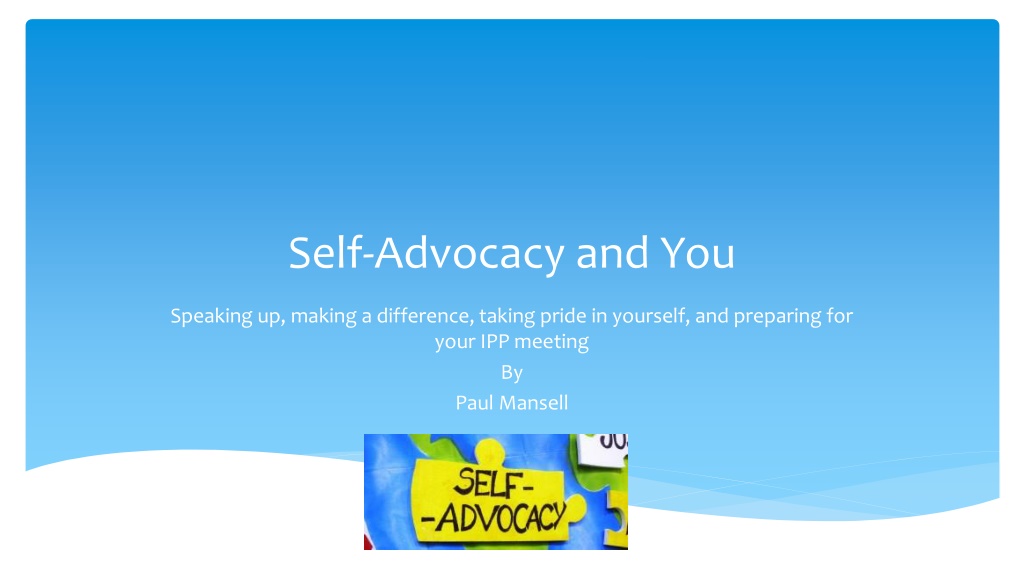
 undefined
undefined







